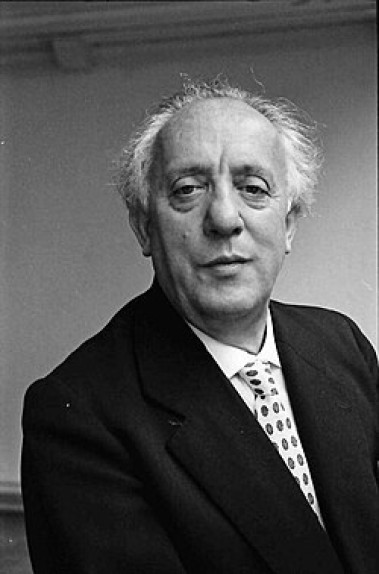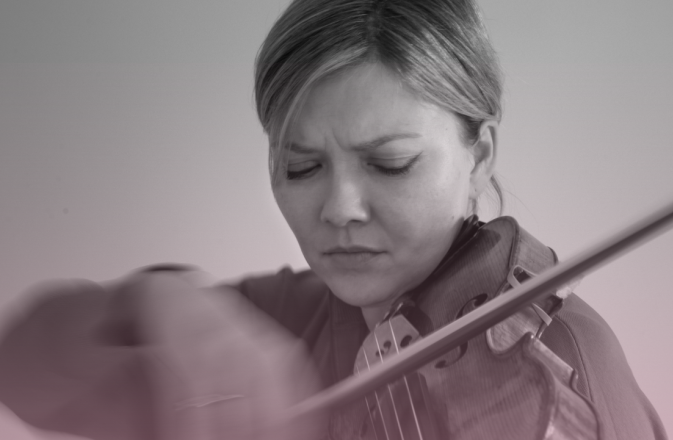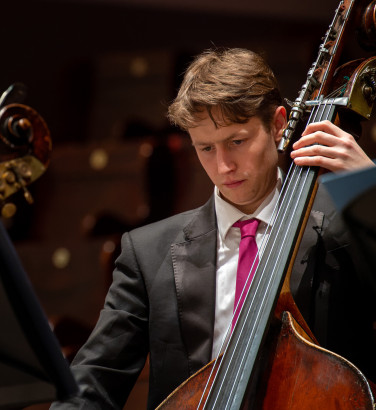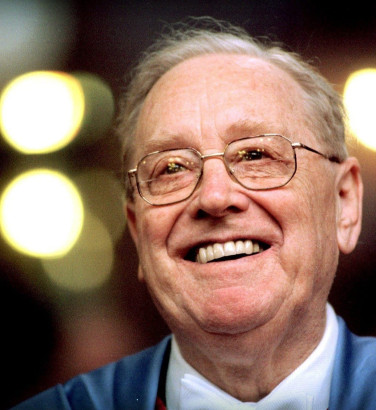
A cry of protest and hope: Hartmann's Concerto funebre
10 Oct 2025
News Story
This autumn, the Scottish Chamber Orchestra presents a compelling programme entitled Haydn’s Drum Roll. It’s a programme that spans centuries yet speaks directly to the present, featuring a striking contrast of musical voices and works.
Among them is Karl Amadeus Hartmann’s Concerto funebre, a deeply emotional work that speaks of resistance, remembrance and resilience.
Composed in 1939, just as Europe was descending into war, Concerto funebre is one of Hartmann’s earliest and most direct musical responses to the rise of fascism in Germany. Though he remained in Munich, Hartmann refused to participate in the cultural life of the Nazi regime, withdrawing his works from public performance and composing in private, as an act of protest. On this occasion it will be directed from the violin by the internationally acclaimed violinist Alina Ibragimova.
Originally titled Musik der Trauer ('Music of mourning'), the piece was later renamed Concerto funebre, reflecting its dual nature: a lament for the victims of tyranny and a tribute to those with the courage to resist. Scored for solo violin and string orchestra, the work unfolds in four movements, each with its own emotional landscape. You can hear these in our Spotify playlist below.

Karl Amadeus Hartmann
Credit: Landesarchiv Baden-Württemberg (photo credit: Willy Pragher)After the stark and haunting Introduktion (Largo) sets a sombre tone, the second movement (Adagio) offers moments of fragile beauty and introspection. This gives way to turbulent and agitated music in the Allegro di molto, perhaps reflecting the chaos and violence of the time. The final movement (Choral) is a slow, lyrical march based on the song “Unsterbliche Opfer” (“Immortal Victims”), which had its roots in the 1905 Russian revolution and was quoted by Shostakovich in his Symphony No. 11 – linking Hartmann's music to a broader history of resistance and remembrance.
Alina Ibragimova, a champion of this music, brings both intensity and nuance to this powerful work. Known for her expressive playing and fearless programming, she is ideally placed to illuminate the emotional depth and historical weight of Hartmann’s music.
In pairing Concerto funebre with Haydn’s Drum Roll Symphony – a work full of wit, invention, and dramatic flair – the SCO invites audiences to reflect on music’s power to entertain, provoke, console and challenge.
Performances take place in St Andrews, Edinburgh and Glasgow, offering audiences across Scotland the chance to experience this rare and resonant work in the hands of one of today’s most compelling violinists.
Related Stories
![]()
The medieval carol
24 November 2025
For this year's Christmas article, we look back at some very early festive carols ...![]()
Jamie Kenny appointed Principal Double Bass
17 November 2025
News from the lower strings desks!![]()
Sir Charles Mackerras: a centenary celebration
17 November 2025
Join us as we celebrate the memory of one of the SCO's greatest conductors on his 100th birthday!



